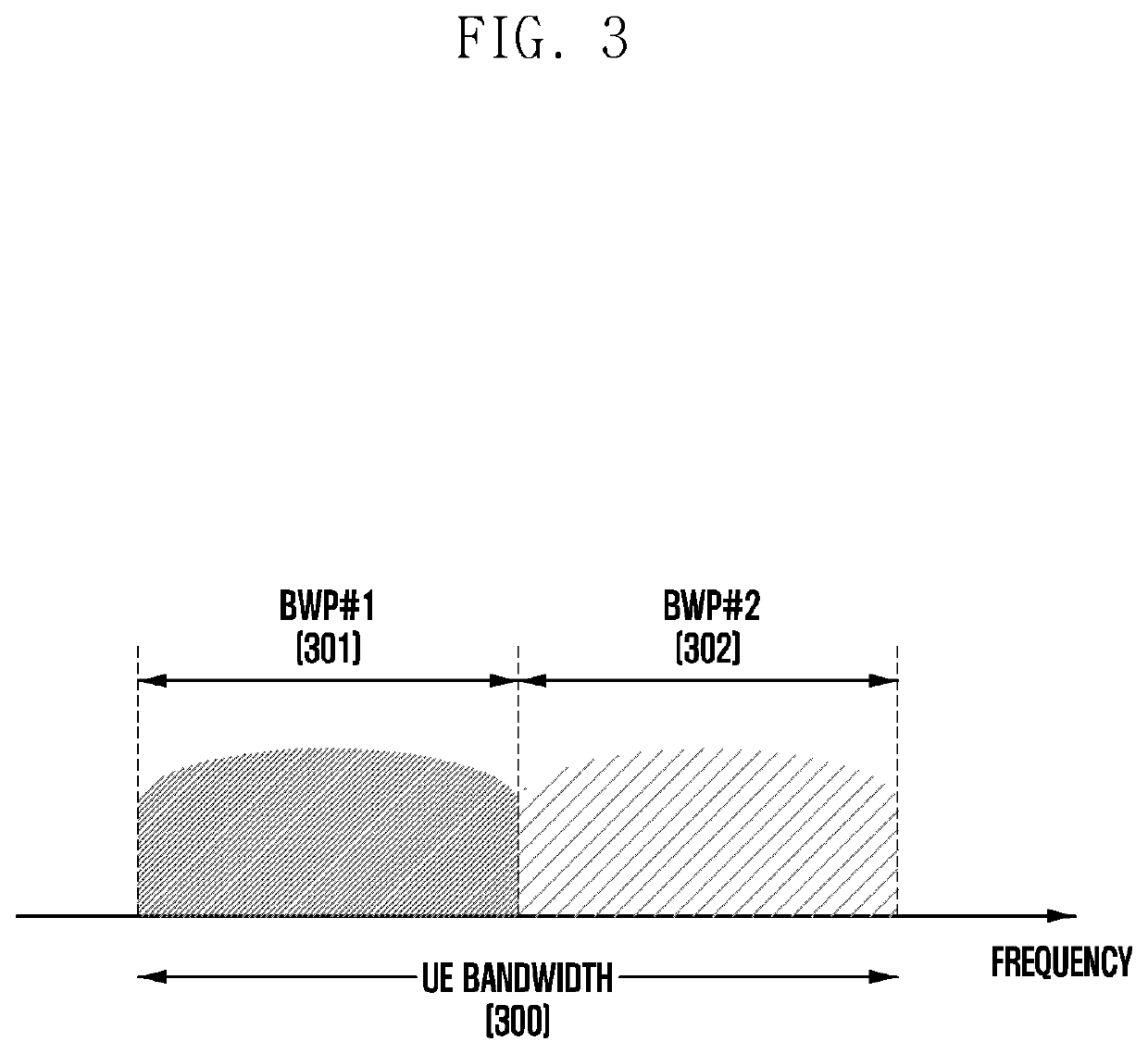Method and apparatus for blind-decoding physical downlink control channel (PDCCH) in wireless communication system
a wireless communication system and control channel technology, applied in wireless communication, transmission path sub-channel allocation, power management, etc., can solve the problem of terminal inevitably consuming power, and achieve the effect of reducing the power consumed by the terminal
- Summary
- Abstract
- Description
- Claims
- Application Information
AI Technical Summary
Benefits of technology
Problems solved by technology
Method used
Image
Examples
first embodiment
[0139]A first embodiment proposes a method for controlling a sleep mode of a terminal based on time-domain resource allocation information acquired from DCI.
[0140]The terminal may perform monitoring, that is, blind-decoding, of a PDCCH at a particular time point, and accordingly, may acquire scheduling information for a data channel, that is, a PDSCH or a PUSCH. In this example, a sleep mode operation of the terminal may be controlled according to, for example, whether the corresponding scheduling is self-slot scheduling or cross-slot scheduling, based on time-domain resource allocation information for the PDSCH or the PUSCH.
[0141]FIG. 7 illustrates a view of an example according to the first embodiment.
[0142]Referring to FIG. 7, the terminal may monitor a PDCCH 701 in a slot 700. An operation of blind-decoding a PDCCH by the terminal is described in more detail. The terminal may first receive a symbol for a PDCCH (as indicated by reference numeral 702). That is, this configuration ...
embodiment 1-1
[0148]According to the first embodiment, the terminal, which is to operate in a sleep mode in a particular slot (e.g., slot n), may additionally determine whether the terminal should perform a pre-configured or indicated operation (e.g., transmission / reception of another channel or signal) in slot n. If the terminal should perform a pre-configured or indicated operation in slot n, the terminal does not operate in the sleep mode, but may perform the relevant operation. If there is no pre-configured or indicated operation that the terminal should perform in slot n, the terminal may operate in the sleep mode. The above-described pre-configured or indicated operation may correspond to at least one of, for example, the following operations of a terminal.[0149]Operation of receiving a PDSCH scheduled in slot n (according to a PDCCH transmitted in a slot other than slot n);[0150]Operation of transmitting a PUSCH scheduled in slot n (according to a PDCCH transmitted in a slot other than slo...
second embodiment
[0158]In the embodiment in FIG. 7, when a terminal receives a PDCCH (as indicated by reference numeral 702) and then blind-decodes the relevant PDCCH (as indicated by reference numeral 703) in the same slot immediately after an operation of receiving the PDCCH, the terminal essentially buffers a symbol (as indicated by reference numeral 704) transmitted during a time period in which the terminal blind-decodes the PDCCH. If a PDSCH scheduled in the corresponding slot does not exist, the terminal may discard the buffered symbol. In this example, execution of an unnecessary buffering operation 708 by the terminal results in a waste of power. That is, in a state in which the terminal does not know time-domain resource allocation information for a PDSCH, minimization of power consumption due to unnecessary symbol buffering by the terminal may help to reduce power consumed by the terminal. Further, the terminal may simultaneously perform an operation of receiving and buffering a symbol an...
PUM
 Login to View More
Login to View More Abstract
Description
Claims
Application Information
 Login to View More
Login to View More - R&D
- Intellectual Property
- Life Sciences
- Materials
- Tech Scout
- Unparalleled Data Quality
- Higher Quality Content
- 60% Fewer Hallucinations
Browse by: Latest US Patents, China's latest patents, Technical Efficacy Thesaurus, Application Domain, Technology Topic, Popular Technical Reports.
© 2025 PatSnap. All rights reserved.Legal|Privacy policy|Modern Slavery Act Transparency Statement|Sitemap|About US| Contact US: help@patsnap.com



